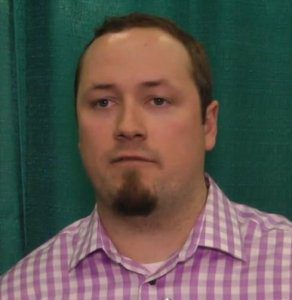Infrastructure Outlook: From the Video Vault: Erosion Control

Informed Infrastructure spoke with Matthew Welch, technical manager with Profile Products, at the International Erosion Control Association (IECA) Environmental Connection 2016 event. This column features highlights from the discussion, and a video recording of the full interview can be viewed at informedinfrastructure.com/28058/profile-soil-solutions-software-welch.
The Five Fundamentals
“Profile Soil Solutions Software (PS3) is the vessel in which we incorporate our five fundamentals to successful erosion control for disturbed areas,” says Welch.
These critical design considerations for immediate and long-term vegetation are:
1. Soils
2. Species selection
3. Erosion and sediment control material selection
4. Installation
5. Inspection and maintenance
“The first step is testing soils to know the agronomic potential,” notes Welch. “Vegetation selection is next; fitting that to your actual site, rather than just going with the typical blend that’s common in your area.
“The next step is selecting an erosion control product for your site,” he adds. “That can be for slopes or channels, and we have design software that utilizes the Russell Equation and Manning’s Equation for channel design.”
The next step is proper installation. “Products are only as good as the installation process, so making sure they’re installed properly is extremely vital,” notes Welch.
The final step is inspection and maintenance to ensure the site is developing properly.
Better Data for Better Designs
“We have specifications, CAD drawings, everything you should need to have a successful install of a variety of products—from base revegetation mulches to high-performance flexible growth media to soil amendments to turf-reinforcement mats,” says Welch.
The Profile Products teams use scientific data to design a site and select the correct products to ensure success.
“In a lot of erosion-control projects, revegetation is the ultimate goal,” adds Welch. “We always start with a soil test to ensure that it’s a sustainable approach to your site.”
Profile typically recommends a variety of products for a site depending on parameters such as slope, slope length and width, and gradient.
“We’ll be able to estimate how much of each product you’ll need based on those site parameters,” notes Welch.
Cost calculation also is part of the process, but Welch cautions that prices fluctuate depending on the time of year and location, so estimates rarely are the same.
GreenArmor
Profile Products is receiving a lot of attention for its GreenArmor System, which combines engineering and agronomy to make erosion control more natural. The system begins with Futerra TRM (Turf Reinforcement Mat) or Futerra R45 HP-TRM (High-Performance Turf Reinforcement Mat) to provide a permanent, lofty and open matrix. It’s then hydraulically infilled with Flexterra HP-FGM (High-Performance Flexible Growth Medium) to bond soil and seeds while accelerating growth.
The system protects against elevated levels of hydraulic lift and shear forces while encouraging turf establishment and long-term root reinforcement—growing denser vegetation, faster, in areas where common TRMs have fallen short.
“Green Armor can replace up to 6- and 12-inch riprap, depending on availability and how easily you can establish seed in your part of the country,” notes Welch.
He also points out that innovation and scientific study are key elements of the company, which doesn’t believe in maintaining the status quo.
“We have a research and development team in Conover, North Carolina, that’s absolutely industry leading,” adds Welch. “We’re always working on something new to innovate and continually improve all of our products.”
About Todd Danielson
Todd Danielson has been in trade technology media for more than 20 years, now the editorial director for V1 Media and all of its publications: Informed Infrastructure, Earth Imaging Journal, Sensors & Systems, Asian Surveying & Mapping, and the video news portal GeoSpatial Stream.


